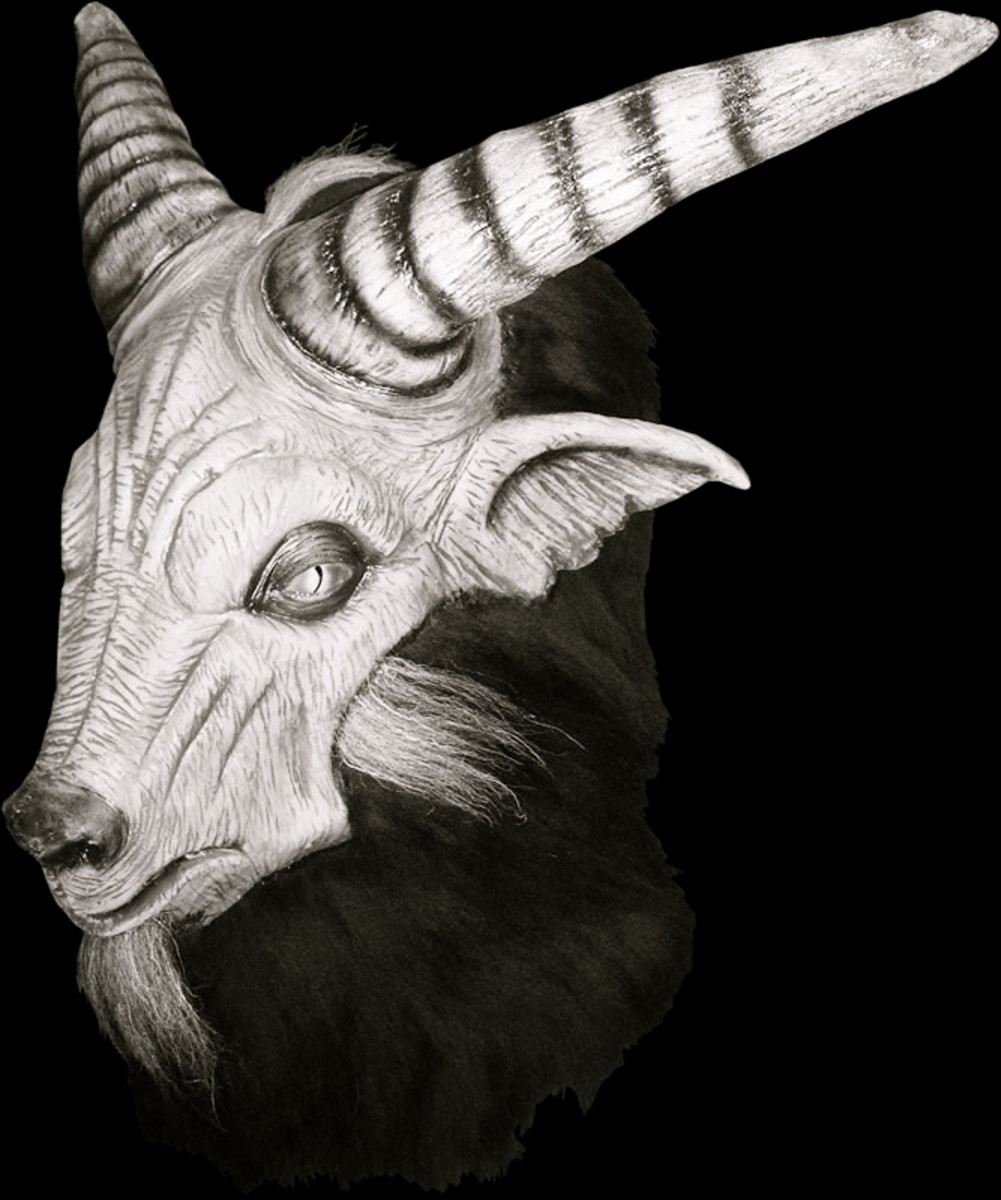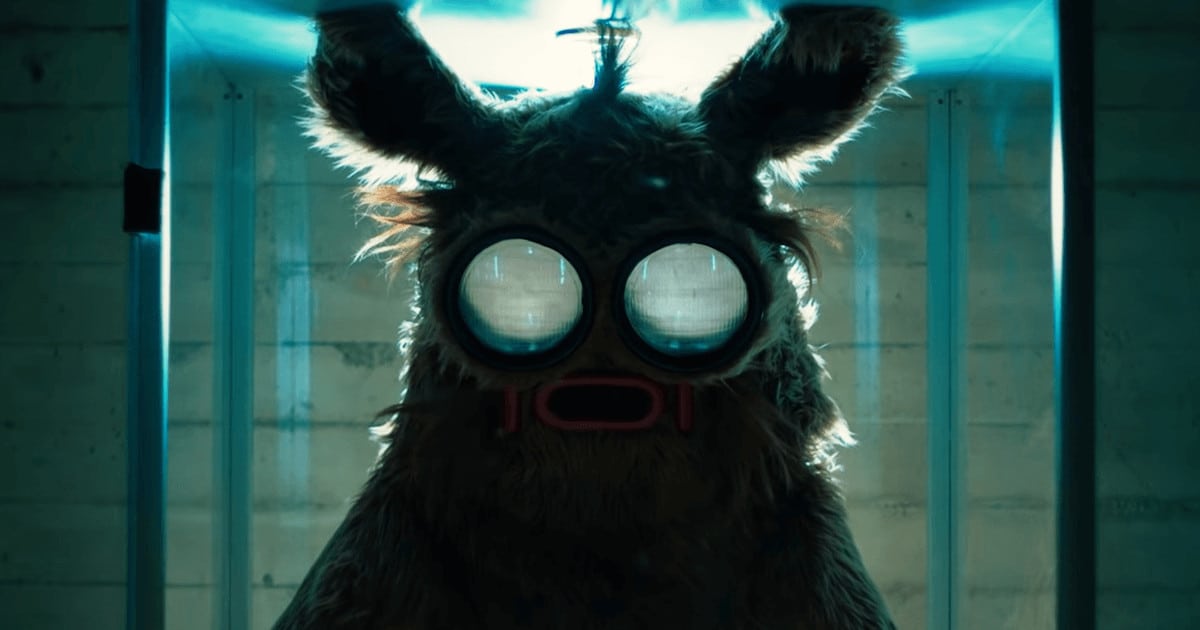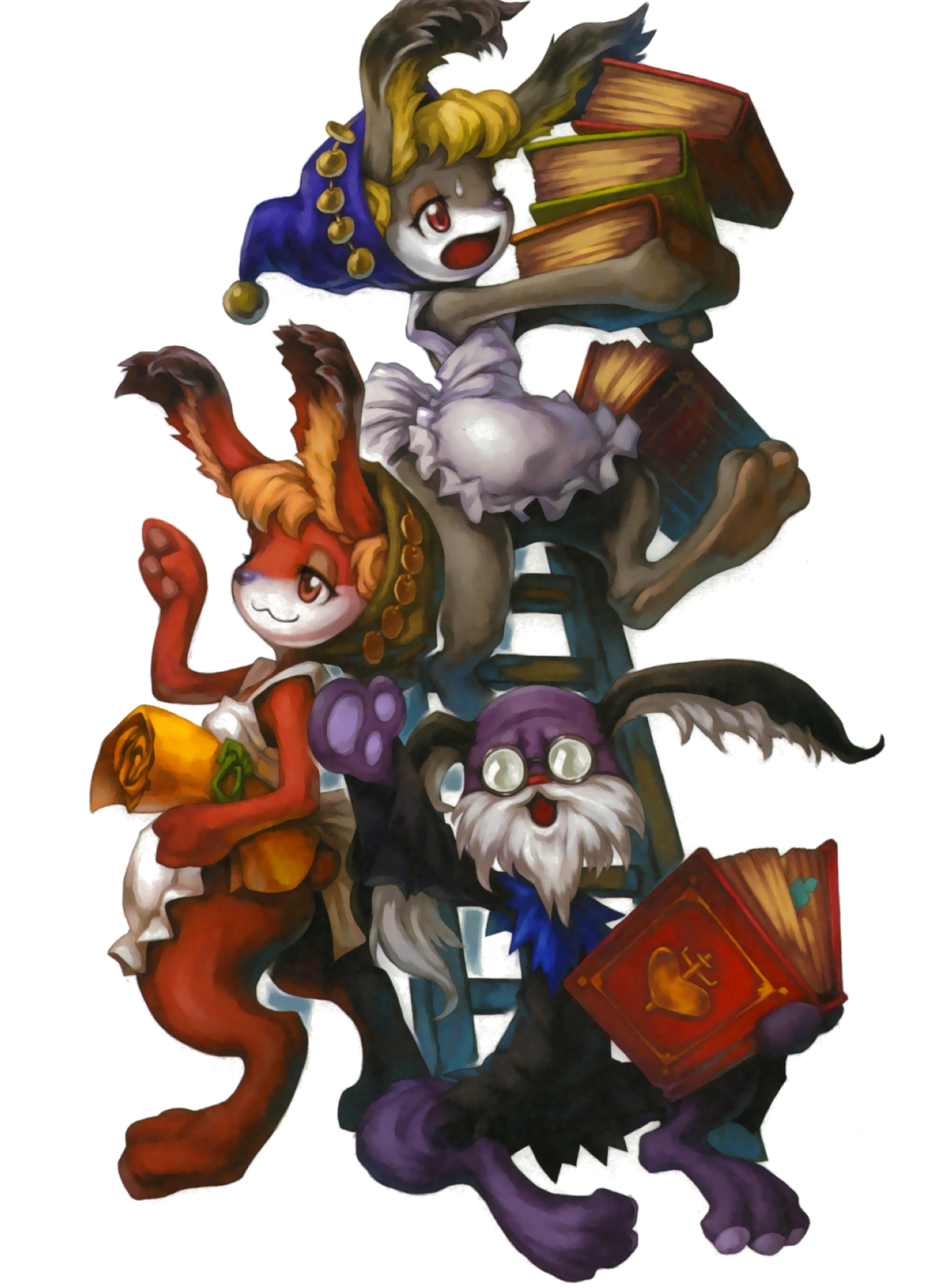Discover The Pooka: Ireland's Enigmatic Shapeshifter
Have you ever felt a strange presence in the quiet countryside, or perhaps seen a fleeting shadow that seemed more than just an animal? In the rich tapestry of Irish folklore, few figures capture the imagination quite like the pooka. This mysterious creature, known for its ability to change its outward form, has been a part of local tales for many centuries, truly making it a fascinating subject for anyone curious about the unseen world.
For generations, stories about the pooka have passed from one person to the next, often told around a warm fire on a chilly evening. These tales speak of a being that can appear in many different guises, sometimes helpful, sometimes a bit mischievous, and at other times, perhaps a little frightening. It is a creature that seems to embody the wild, untamed spirit of the land itself, you know, just like the ancient stones that dot the Irish landscape.
Today, as of October 26, 2023, there's a renewed interest in these old stories, with people looking to understand the deeper meanings behind them. We are going to take a closer look at the pooka, exploring its various forms, its personality, and the lessons these old stories might still hold for us. It is, in a way, a chance to connect with the very heart of Irish tradition.
Table of Contents
- What is a Pooka?
- Pooka's Personality: Mischief or Menace?
- Regional Variations and Similar Creatures
- Pooka in Modern Culture
- Lessons from the Pooka's Tales
- Frequently Asked Questions
- Exploring More of the Unseen
What is a Pooka?
The pooka, or púca as it is known in Irish, is a creature of Celtic folklore, primarily from Ireland. It is a being that is quite often described as a spirit of the wild, a trickster, and a shapeshifter. Its name itself, "púca," comes from an Old Irish word that means "spirit" or "ghost," so, that tells you a little something about its ancient roots.
Stories about the pooka often paint a picture of a creature that exists between worlds, not quite good and not quite bad. It is a figure that seems to challenge our ideas about what is normal or expected. Sometimes, it appears as a dark, imposing figure, while at other times, it might be nearly invisible, just a feeling in the air.
This creature is, in some respects, a very important part of the Irish storytelling tradition. It reminds people that there are mysteries in the world that we cannot easily explain. It is a bit like how some things, like choosing your favorite pizza from a nearby shop, are just part of your regular life, but then there are other things, like the pooka, that are completely out of the ordinary, and that is what makes them so interesting.
Origins in Irish Folklore
The pooka's origins are deeply tied to the ancient beliefs of the Celtic people. These beliefs often revolved around the natural world and the spirits that were thought to inhabit it. The pooka is, in a way, a personification of the unpredictable aspects of nature, the sudden storms, or the unexpected calm after a long journey.
It is not a creature that belongs to a single, simple tale; instead, it appears in many different local legends and stories. Each region of Ireland, it seems, has its own version of the pooka, with slight differences in its appearance or behavior. This regional variation makes the study of the pooka particularly rich, offering many different perspectives on this one creature.
These stories were not just for entertainment; they often served as a way to explain strange occurrences or to teach lessons about respect for the land and its hidden forces. The pooka, therefore, has a very practical role in the folklore, helping people understand the world around them, even the parts that were a bit scary or unknown.
The Shapeshifting Nature
The most defining characteristic of the pooka is its remarkable ability to change its form. It is a master of disguise, able to transform into various animals or even human-like figures. This shapeshifting is not just for show; it often serves a purpose in the stories, allowing the pooka to interact with people in different ways, sometimes to trick them, or sometimes to help them.
Its transformations are, in a way, like a vector logo, able to change size and form without losing its core essence, always remaining the pooka, no matter what it looks like. This quality makes it a very elusive creature, hard to pin down or predict. You might see it as one thing, and then, in a blink, it is something else entirely, which is quite startling, you know.
This ability to change forms is a common theme in many mythologies around the world, but the pooka has its own distinct Irish flavor. It often appears as dark-furred animals, suggesting a connection to the wilder, less domesticated aspects of the natural world. It is a creature that seems to remind us that things are not always what they appear to be on the surface.
Common Forms of the Pooka
While the pooka can take many shapes, there are a few forms that appear quite often in the old stories. One of the most common is that of a dark horse, often with glowing eyes. This horse might appear on a lonely road at night, offering a ride to a weary traveler. However, accepting the ride can lead to a wild, uncontrollable journey, which is rather exciting, but also quite terrifying.
Another frequent form is that of a large, dark goat, or even a bull. These animal forms often emphasize the pooka's strong connection to the land and its raw, untamed energy. Sometimes, it might appear as a rabbit, a dog, or even a crow, making its presence known in a more subtle way. It really depends on the story and the message it is trying to convey.
Less common, but still present in some tales, is the pooka taking on a human-like appearance. When it does this, it usually has some animalistic features, like ears or a tail, that give away its true nature. These forms, too, are often dark and imposing, adding to the creature's mysterious aura. It is almost as if it is always a bit hidden, even when it is right there in front of you.
Pooka's Personality: Mischief or Menace?
The pooka's personality is not easily categorized. It is not simply good or bad; instead, it seems to exist in a grey area, much like many forces in nature. Sometimes, it can be a helpful presence, guiding lost travelers or even helping with farm work, if treated with respect. However, it can also be quite a trickster, causing mischief or even a little bit of trouble for those who disrespect it or the wild places it inhabits.
Its actions often seem driven by its own unique sense of justice or perhaps just a playful desire to stir things up. It is not a malicious creature in the way a truly evil spirit might be; rather, its actions are more about reminding people of their place in the world, or perhaps just having a bit of fun at their expense. This dual nature is a key part of what makes the pooka such a compelling figure in folklore, you know.
Understanding the pooka's personality means accepting that some things are just unpredictable. You cannot always tell what it will do next, and that is part of its charm and its danger. It is a bit like life itself, full of unexpected twists and turns, which is, in a way, quite a valuable lesson.
Helpful or Harmful Encounters
Encounters with the pooka can vary wildly. In some stories, the pooka might help a farmer finish harvesting their crops overnight, or guide someone safely through a dangerous bog. These helpful acts usually come with a warning: do not try to thank the pooka directly, or offer it gifts, as this can often anger it. It is almost as if it prefers to remain unseen and unacknowledged for its good deeds.
On the other hand, the pooka is also known for its mischievous side. It might lead travelers astray, cause animals to stampede, or even destroy property if it feels slighted. One common tale involves the pooka spoiling berries or other crops that are not harvested by a certain date, ensuring that people do not get too greedy. This acts as a reminder that nature, too, has its own rules and boundaries, which is pretty clear.
These varied encounters highlight the pooka's role as a guardian of the wild and a punisher of those who are disrespectful. It is a creature that demands respect, not fear, and if you offer it that, you might just find it to be a helpful, if unpredictable, ally. Sometimes, the pooka might even help, like a good security solution that helps keep people safe, in its own unique, folklore way.
The Pooka's Voice
Interestingly, the pooka is often said to have the ability to speak human language. This is a rather unusual trait for a shapeshifting spirit and sets it apart from many other creatures of folklore. When it speaks, its voice is often described as deep, resonant, and sometimes quite eerie. This ability to communicate directly with people adds another layer to its personality, making it more than just an animal spirit.
Its words can be riddles, warnings, or even prophecies. The pooka might use its voice to taunt someone it is playing tricks on, or to deliver a stern message about respecting the land. This verbal interaction means that encounters with the pooka are not just physical; they are also intellectual and often quite memorable for the people involved. It is a bit like having a very strange, wise, and slightly scary conversation, you know.
The fact that it speaks suggests a certain level of intelligence and awareness, making it a truly complex character in Irish mythology. It is not just an instinctual creature; it has a mind and a will, and it uses its voice to make that clear. This aspect of the pooka really adds to its enduring appeal and the depth of its stories, actually.
Regional Variations and Similar Creatures
Just like how you might find different pizza toppings or styles depending on which city you are in, the pooka's characteristics can vary a bit from one part of Ireland to another. While the core idea of a shapeshifting, wild spirit remains, the specifics of its appearance or behavior might shift. This regional flavor adds a wonderful richness to the folklore, showing how stories adapt to local landscapes and traditions.
For example, in some areas, the pooka might be more associated with the sea, appearing as a monstrous fish, while in others, it is strictly a land-based creature. These variations mean that there is no single, definitive pooka, but rather a collection of related beliefs. It is a bit like a family of stories, all connected but with their own unique personalities, which is pretty neat.
Exploring these regional differences helps us understand the wider context of Irish folklore. It shows how communities adapted these tales to their own surroundings and needs, making them truly their own. This adaptability is a hallmark of many ancient stories, allowing them to remain relevant for a very long time, you know.
Púca in Other Cultures
While the pooka is most strongly linked to Ireland, similar shapeshifting spirits appear in the folklore of other Celtic nations. In Wales, for instance, there are tales of the "Pwca," which shares many characteristics with its Irish cousin. These Welsh spirits also have a reputation for mischief and can take on animal forms, particularly that of a dark horse.
Across the British Isles, you can find creatures like the "Puck" in English folklore, famously appearing in Shakespeare's "A Midsummer Night's Dream." While Puck is often depicted as a more whimsical and less threatening figure than the Irish pooka, the shared name and shapeshifting abilities suggest a common ancient root. It is, in some respects, a very interesting connection across different cultures.
These cross-cultural connections show that the idea of a wild, unpredictable shapeshifter is not unique to Ireland. It is a theme that resonates with many different peoples, reflecting a universal fascination with the untamed aspects of nature and the mysterious beings that might inhabit it. This shared heritage makes the pooka even more significant in the broader study of world mythology, honestly.
Related Folklore Figures
Beyond the direct linguistic connections, the pooka shares traits with other folklore figures. For example, the Scottish "Each-uisge" (water horse) or the Irish "Aughisky" are also shapeshifting horses, though often far more malevolent than the pooka. These creatures lure unsuspecting riders to watery deaths, a much darker fate than a mere wild ride.
Then there are the "brownies" or "hobgoblins" of British folklore, who, like the pooka, can sometimes offer help with household chores, but demand respect and can turn mischievous if offended. This shared theme of a domestic spirit that requires careful handling shows a common thread in how people thought about unseen helpers and hinderers. It is almost like a universal cautionary tale about treating spirits with care, you know.
Understanding these related figures helps to place the pooka within a larger framework of supernatural beliefs. It shows that while the pooka is unique, it is also part of a wider family of spirits that reflect human anxieties and hopes about the natural world and the forces beyond our control. This broader view really enriches our appreciation for the pooka's place in folklore.
Pooka in Modern Culture
Even today, the pooka continues to capture the imagination of artists, writers, and filmmakers. Its enigmatic nature and shapeshifting abilities make it a perfect subject for modern storytelling, allowing creators to explore themes of identity, transformation, and the unknown. It is, in a way, a timeless figure that keeps finding new ways to appear in our world.
The enduring appeal of the pooka shows that these ancient stories still hold relevance for us. They speak to our fascination with mystery and the idea that there might be more to the world than meets the eye. Just as you might easily download a vector logo in various formats for different uses, the pooka's story adapts and appears in many different forms in contemporary media, which is pretty cool.
This continued presence in modern culture ensures that the pooka's legacy lives on, introducing new generations to this fascinating creature of Irish lore. It is a testament to the power of storytelling itself, and how certain characters just stick with us through the ages, you know.
Literature and Film
The pooka has made notable appearances in various works of literature. Perhaps one of the most famous is the play "Harvey" by Mary Chase, later adapted into a film starring Jimmy Stewart. In this story, the main character's best friend is an invisible, six-foot-tall rabbit named Harvey, who is described as a pooka. This portrayal gives the pooka a gentle, benevolent, and slightly eccentric character, quite different from some of the older, wilder tales.
Beyond "Harvey," the pooka appears in fantasy novels, children's books, and even graphic novels, often with varying interpretations of its nature. Sometimes it is a helpful guide, sometimes a mischievous trickster, and occasionally a more menacing figure. These literary appearances show how flexible the pooka's character can be, allowing for many different narratives to unfold around it.
In film and television, the pooka's shapeshifting makes it visually appealing. While not always explicitly named "pooka," creatures with similar traits often appear, drawing inspiration from this rich folklore. This visual representation helps to keep the pooka alive in the popular imagination, bringing its mysterious presence to a wider audience, which is very important for old stories.
Contemporary Interpretations
Modern interpretations of the pooka often lean into its more ambiguous nature. Instead of simply being good or bad, it is often portrayed as a force of nature, indifferent to human morality, or as a symbol of the wildness that still exists within the modern world. This nuanced approach allows for deeper exploration of what the pooka represents in a changing society.
Some contemporary stories use the pooka to explore themes of mental health, perception, and reality, much like the invisible Harvey. Others might use it

The Plague of The Irish Pooka: A Changeling Full of Mischief - HubPages

'Pooka' Review: A Man, a Costume, and the Space In Between

Pooka | Odin Sphere Wiki | FANDOM powered by Wikia